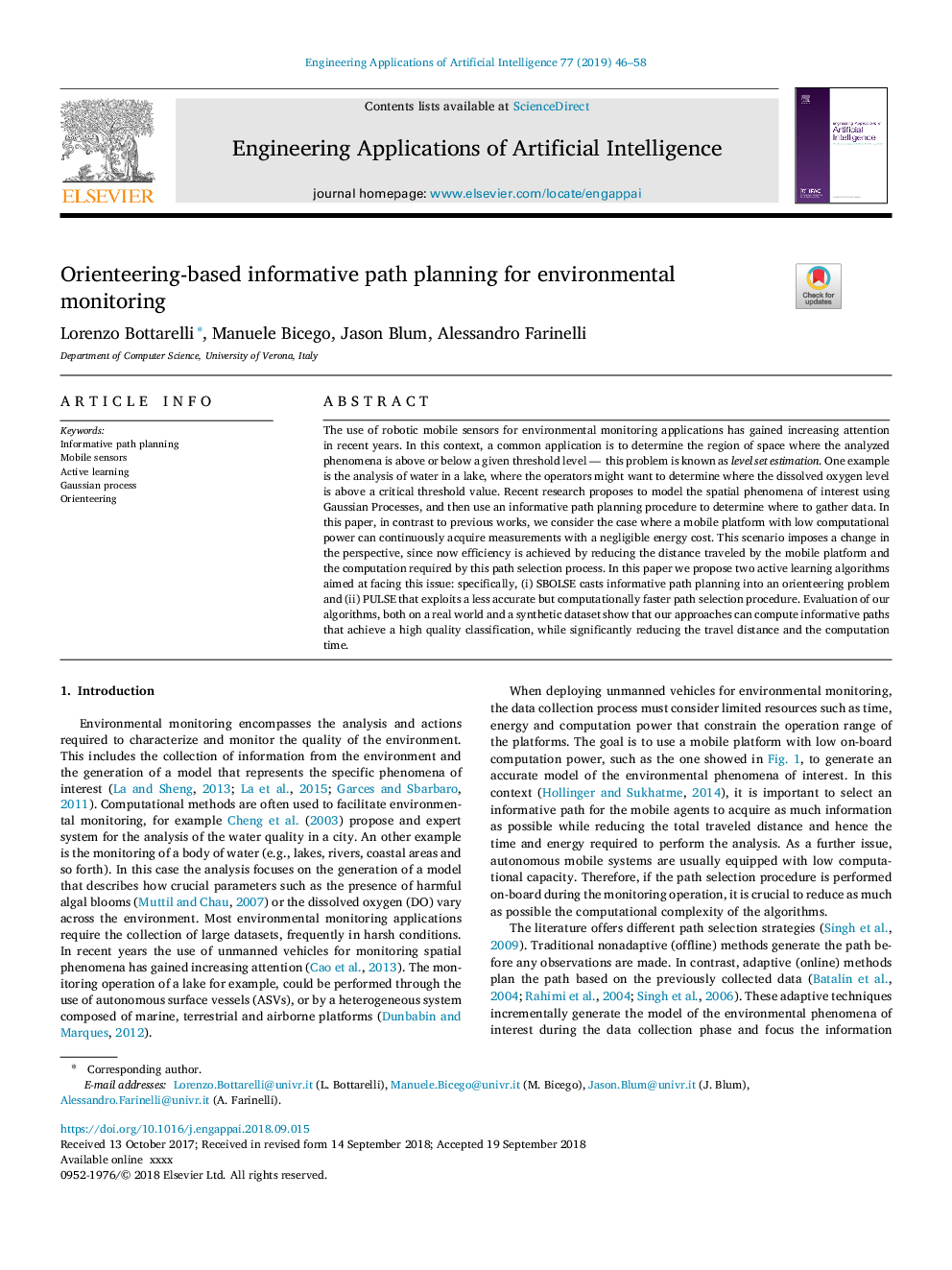| Article ID | Journal | Published Year | Pages | File Type |
|---|---|---|---|---|
| 11021206 | Engineering Applications of Artificial Intelligence | 2019 | 13 Pages |
Abstract
The use of robotic mobile sensors for environmental monitoring applications has gained increasing attention in recent years. In this context, a common application is to determine the region of space where the analyzed phenomena is above or below a given threshold level -Â this problem is known as level set estimation. One example is the analysis of water in a lake, where the operators might want to determine where the dissolved oxygen level is above a critical threshold value. Recent research proposes to model the spatial phenomena of interest using Gaussian Processes, and then use an informative path planning procedure to determine where to gather data. In this paper, in contrast to previous works, we consider the case where a mobile platform with low computational power can continuously acquire measurements with a negligible energy cost. This scenario imposes a change in the perspective, since now efficiency is achieved by reducing the distance traveled by the mobile platform and the computation required by this path selection process. In this paper we propose two active learning algorithms aimed at facing this issue: specifically, (i) SBOLSE casts informative path planning into an orienteering problem and (ii) PULSE that exploits a less accurate but computationally faster path selection procedure. Evaluation of our algorithms, both on a real world and a synthetic dataset show that our approaches can compute informative paths that achieve a high quality classification, while significantly reducing the travel distance and the computation time.
Related Topics
Physical Sciences and Engineering
Computer Science
Artificial Intelligence
Authors
Lorenzo Bottarelli, Manuele Bicego, Jason Blum, Alessandro Farinelli,
